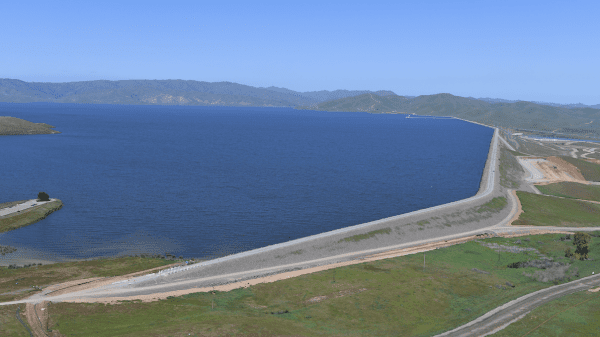California has won an intense game of brinksmanship with the weather. For the time being.
After years of drought, the state went into this year’s rainy season in desperate circumstances. In an August 22, 2022, letter to U.S. interior secretary Deb Haaland, a coalition of agricultural groups wrote, “Western water managers are actively responding to extreme drought. This is forcing unprecedented actions by local water purveyors and agricultural producers to react to significant water shortages.”

An exceptionally wet winter, complete with atmospheric rivers that have periodically deluged the state, has reversed the picture.
On April 20, the California Department of Water Resources (DWR) announced that its State Water Project (SWP) “expects to deliver 100 percent of requested water supplies, up from 75 percent announced in March. This water will be delivered throughout the year to the SWP’s 29 public water agencies that serve 27 million Californians and 750,000 acres of farmland. The last time the SWP allocated 100 percent was in 2006.”
In its announcement, the DWR included a picture of the Central Valley’s San Luis Reservoir, indicating that Merced County, which holds water supply for both the State Water Project and U.S. Bureau of Reclamation’s Central Valley Project, is now full. (The state’s agricultural water supply is administered by a complex network jointly administered by the DWR and the federal Bureau of Reclamation.)
DWR also noted that “Lake Oroville, the SWP’s largest reservoir, and SWP reservoirs are expected to be full by the end of May.”
This is not, strictly speaking, a miracle, but no doubt it feels like one to many.
Abundant rainfall has put off the semiarid state’s chronic and acute water problem—but only partially, and only for the time being.
DWR notes, “While California’s surface water conditions have greatly improved this year following three years of historic drought, several water supply challenges remain in the northern part of the state and in over-drafted groundwater basins that are slow to recover. Millions of Californians rely on groundwater supplies as a sole source of water.”
As the rainy season draws to an end in California, one might step back and try to see the larger picture. Water allocation has been a huge area of contention ever since the state became part of the U.S. Today it involves a delicate balance between urban, agricultural, environmental, and sporting (fishing) interests, to name only the most obvious ones.
For the time being, the state has two major factors running in its favor. Decades of huge population influx have ended and even reversed slightly.
so the pressure of added people is not likely to increase in the foreseeable future. Furthermore, agriculture has by no means been blind to the problem and has moved urgently toward more economical uses of water.
At this point, an impressive 48 percent of the state’s cultivated acreage now employs drip irrigation.
The present respite from the drought thus presents not a solution but an opportunity. The long-term answer will come from analysts who are astute enough to see the whole picture and gauge a proper response, and from a government that is willing to put the right policies into practice. It’s not impossible, but if it occurs, it might look like another quasi-miracle.



